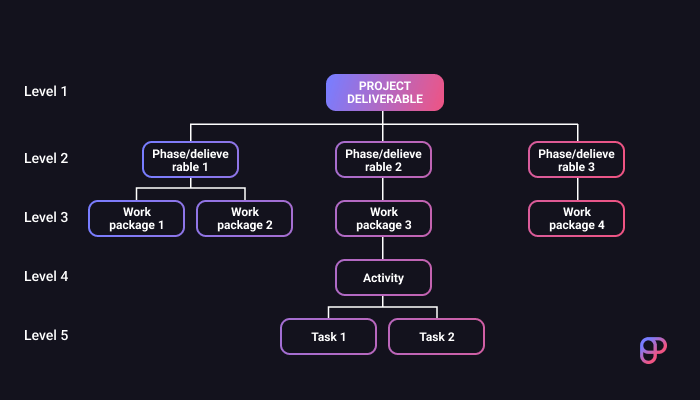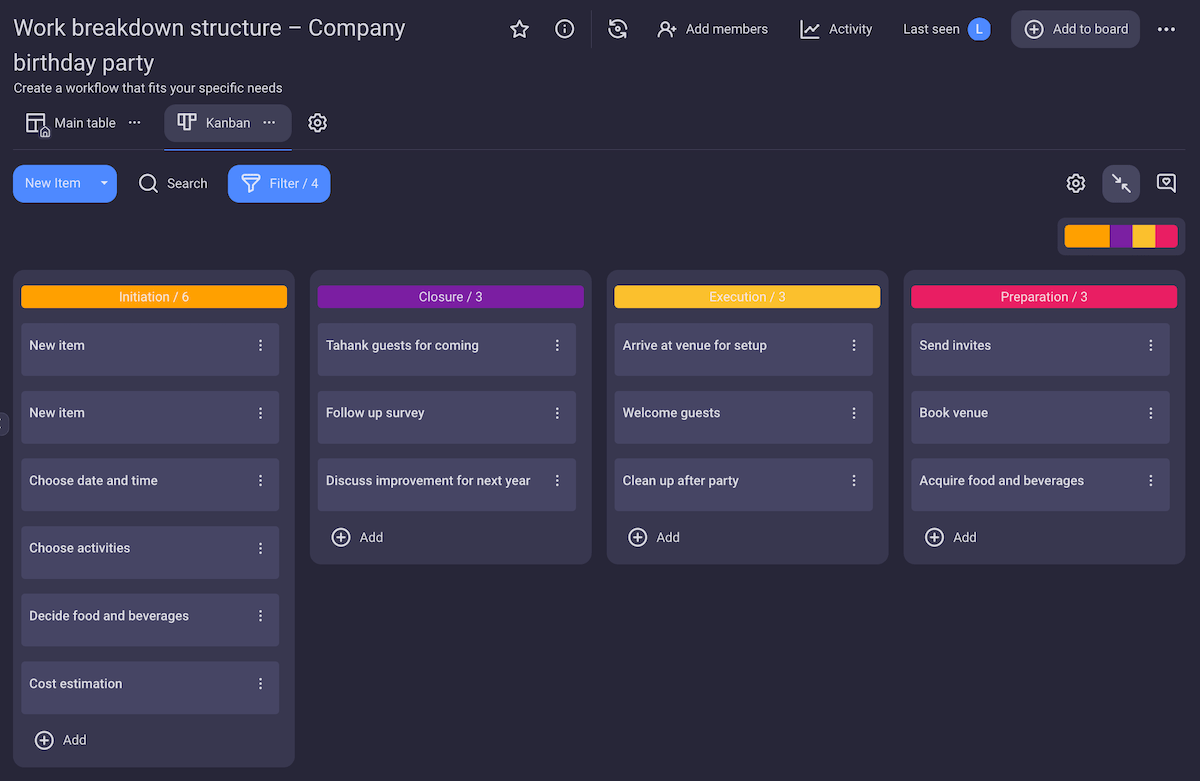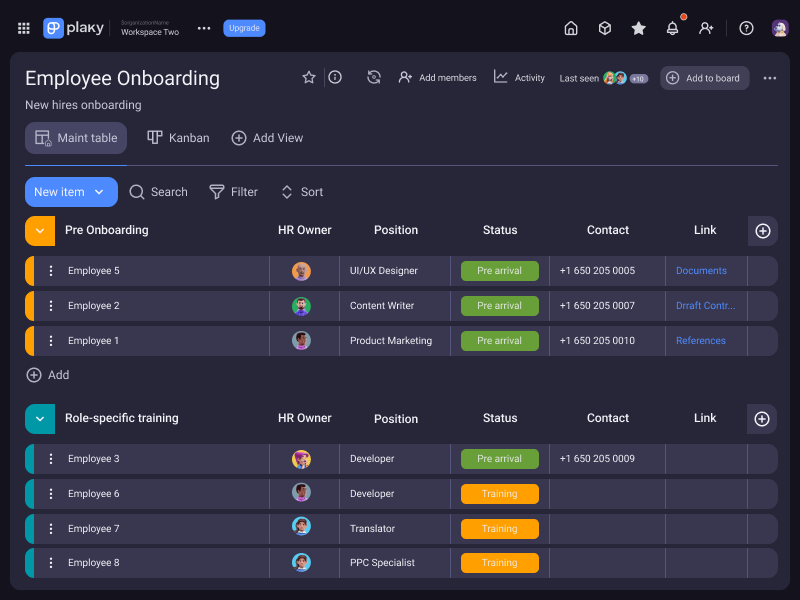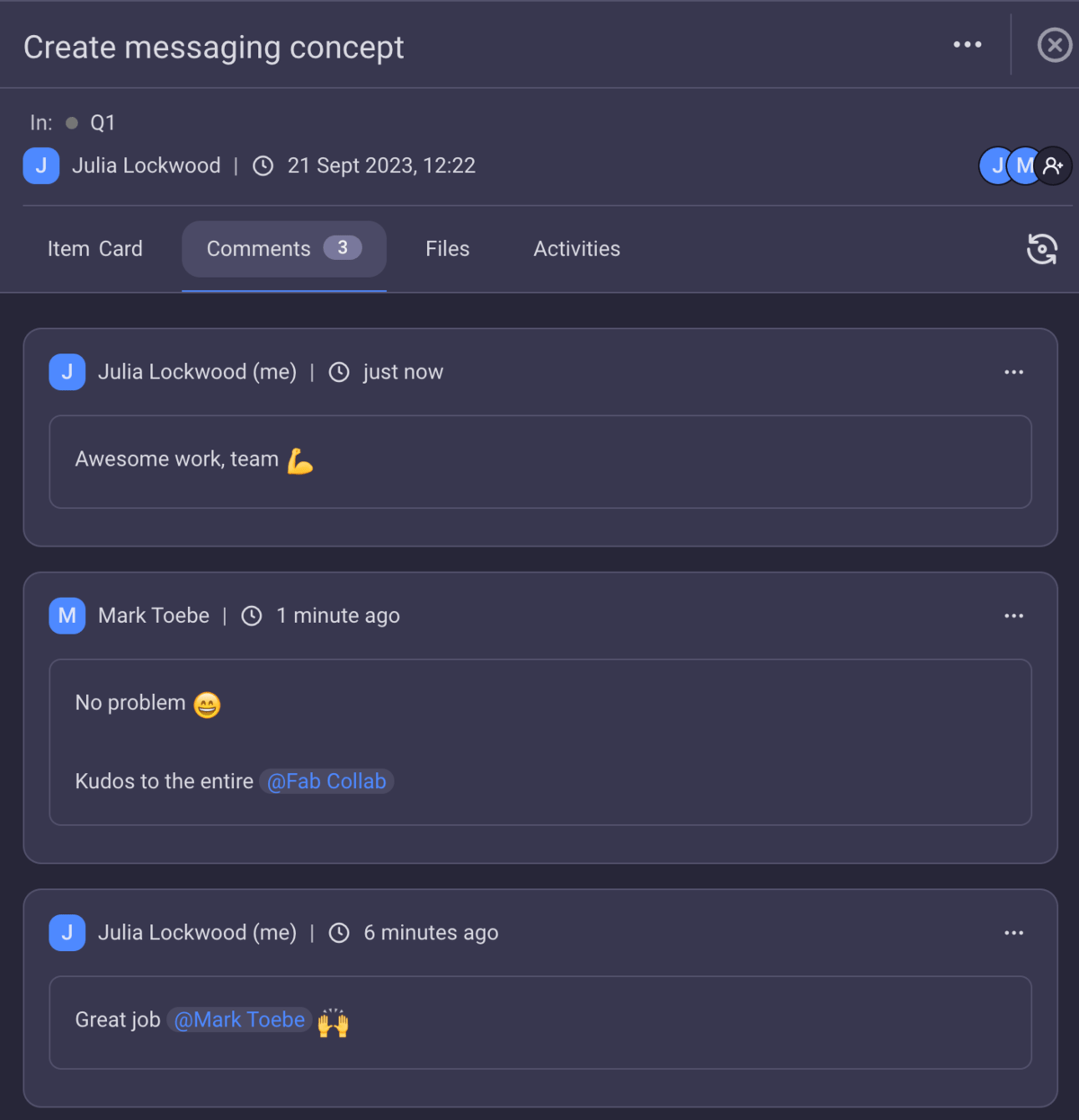Projects fail much more often than they ought to — and when they do, dizzying amounts of money are lost.
Ineffective project management is the main culprit for organizations around the globe collectively losing on average $2 trillion every year.
And yet, some high-performing organizations manage to successfully complete as many as 89% of their projects — compared to only 36% for low performers.
What sets these high-performing organizations apart is their ability to adapt and successfully conquer the most significant challenges that trouble projects of all shapes and sizes.
In this blog post, we will talk about the most common project management challenges, as well as the steps you need to take to overcome them.

- The #1 project management challenge is poorly trained project managers.
- By 2025, it’s expected that 40.7 million professionals in the USA will be working from home.
- One of the key reasons gymnastic enterprises did well during the pandemic is their effort towards open and effective communication.
- Even though inadequate sponsor support is easy to solve, it’s listed as one of the top project management challenges.
- 53% of projects are run by non-professional, poorly trained managers.
In this article:
Challenge #1: Poor project estimates
Every project begins with estimates. A large margin of error at this stage could mean that the project is doomed from the start.
There are 3 major stages where estimates can go wrong:
- Estimating the feasibility and importance of the project — making a wrong decision at this point could not only mean throwing yourself into the fire by taking on an impossible project, but it could also make your organization lose valuable time and resources.
- Estimating project baselines — this includes estimating the budget, scope, and project timeline. Poorly estimating one, or all of these 3 aspects, will likely leave you with vastly inadequate resources, forcing you to ask for more funds or deal with poor project scheduling.
- Estimating deadlines — even if you do everything right up to this point, you can put both yourself and your team under a lot of pressure by setting unrealistic project deadlines.
Solution: Ask for help when making estimates
The good news is that there are steps even an inexperienced project manager can take to avoid a catastrophe related to poor project estimates.
The first step is talking to all the project stakeholders and figuring out exactly what is required of you.
Then, talk to your team — with a lot of projects, you don’t work alone and don’t have to be an expert at everything.
Create a work breakdown structure (WBS) — a visual breakdown of the entire project scope into its smaller constituent tasks according to hierarchy.
Estimating the time and budget for each of these individual tasks and then summing them up will create a much more accurate estimate of the baselines than trying to do it for the project as a whole.

The good news is that a WBS can be represented as a tree diagram, a list, or a table, depending on your preferences. You can create it using any project management tool — like Plaky.

Finally, learn from the past. Check for records of similar projects done in the past. See what they did well and where they could have done better. Make sure you copy their successes and avoid repeating the same mistakes.
💡 PLAKY PRO TIP
If you want to learn more about learning from previous projects and how to apply that knowledge, check out this article:
Challenge #2: Lack of appropriate project management software
According to Wellingtone’s The State of Project Management report based on a survey of 214 organizations, the lack of appropriate project management software is among the top 10 project management challenges.
This is not surprising — especially in post-pandemic times.
The shift to remote work has been difficult, but contagious and permanent, according to Upwork’s Future Workforce Report. The report states that an increasing number of professionals are working from home — a number that’s expected to reach 40.7 million by 2025, in the USA alone.
However, not just any software will do. Opting for the wrong software that doesn’t suit your team’s needs will only complicate things and may lead to enormous monetary losses.
This is precisely what happened to the German grocery store chain Lidl, which lost €500 million while trying to switch to a different merchandise management software that didn’t suit its business processes — only to revert to its old system a few months later.
Solution: Get the project management software that fits your team
To avoid situations like these, dedicate the same amount of time and care to choosing the best project management software as you would to choosing a new employee.
Doing so will bring you a host of benefits, such as:
- Effective task delegation,
- A clear overview of the project’s progress,
- Simplified management of multiple projects,
- Security and reassurance that comes with ISO 27001, SOC II, and GDPR certifications,
- Easy onboarding of new employees,
- Effective deadline management, etc.
All of these things and more are what you can do in free project management software such as Plaky.

💡 PLAKY PRO TIP
To find the project management software that suits the needs of your team and industry, check out this list:
Challenge #3: Juggling too many projects at once
Many managers like to boast about their multitasking skills — and rightfully so, as multitasking is difficult. It’s actually so difficult that it’s bad for your health and productivity.
Managing several projects at once requires the project manager to multitask — which always goes wrong, one way or another.
Project managers working on multiple projects need to:
- Keep track of all the resources for each project,
- Maintain separate documentation for each project,
- Manage stakeholders on all fronts, and
- Oversee the progress and teams on each project — among other things.
This is not something one person can do without any help — and yet, it happens regularly to most project management professionals across the globe.
Solution: Delegate and prioritize
Projects rarely fail on their own. People fail.
As a project manager, it’s easy to be overwhelmed with task after task that requires your attention. However, not all tasks are created equally.
When you find yourself dealing with more work than you can handle, you need to prioritize and delegate. First, determine which tasks require the most of your attention and are the most urgent. Then, delegate to team members the less important tasks.
While some aspects of the projects will demand your personal attention, you can set up a system that will work perfectly fine without your constant surveillance. This is especially true if you primarily manage Agile projects, which are known for their effective self-management.
In addition to employing a digital PM tool to help you manage multiple projects at once, a good way to take the load off your shoulders is to prioritize your projects. This way, you’ll avoid being overwhelmed and know exactly which way to turn first when issues start cropping up.
If you’re persuasive enough with executive management, you might even be able to avoid working on low-priority projects altogether until high-priority projects are finished.
Challenge #4: Unclear project objectives
Having a vague vision of the project goals is one of the top reasons for project failure.
This issue is quite self-explanatory — if you don’t know where you’re going and what you’re trying to achieve, how can you ever expect to achieve it?
Solution: Be SMART and CLEAR about your objectives
Most people agree that project goals should be SMART or CLEAR, or a little bit of both.

The acronym SMART stands for:
- Specific,
- Measurable,
- Attainable,
- Relevant, and
- Time-based.

The acronym CLEAR stands for:
- Collaborative,
- Limited,
- Emotional,
- Appreciable, and
- Refinable.
Your exact goals will primarily depend on whether the project you’re working on is external or internal.
When it comes to external projects, the main source of your project goal is to consult all the key stakeholders and understand their individual objectives until you have a clear understanding of what you’re working toward.
If you’re working on an internal project, you’ll likely be involved in the pre-planning phases of the project along with executive management — to align your project goals with the organization’s existing business goals.
Challenge #5: Poor communication
Communication in project management can take many forms — and all of them are as important as the next.
However, poor communication can lead to a lot of confusion and costly mistakes — due to:
- Conflicts within the team,
- Misaligned project goals,
- Misinterpretation of roles and responsibilities within the team,
- Misinterpretation of instructions,
- Lack of adequate feedback,
- Lack of a centralized information system, etc.
💡 PLAKY PRO TIP
Good communication is the foundation of any successful business relationship. Learn more about why communication is important in project management and how it can boost your chances of success:
Solution: Create a communication plan
The best way to prevent poor communication in project management is to create a clear communication plan.
According to the 2021 PMI Pulse of the Profession survey, one of the key reasons gymnastic enterprises did so well during the pandemic was due to fostering open and effective communication, collaboration, and empathic leadership.
Through such efforts, they managed to boost transparency and trust, which eventually led to increased project success rates.
This is not easy to do — and it requires 2 things:
- Skilled leadership willing to engage with employees, show empathy, and build trusting relationships, and
- A clear communication plan that everyone will be able to understand and adhere to.
Once information is available at the tip of your fingers, and everyone is on the same page, miscommunication can never again be used as an excuse for inadequate performance.
Once again, project management software is the perfect tool to help you with this issue.
Project management tools allow your entire team to:
- Have access to the same workplace at the same time,
- Share ideas, files, and feedback, and
- Collaborate on projects in real time — even when working remotely.

Challenge #6: Scope creep
Scope creep is one of the biggest and most persistent issues project managers face, regardless of the size or complexity of their project.
The causes of scope creep are many and difficult to tackle, but some of the most common ones include:
- Poor communication with stakeholders — unless everything is clarified at the beginning of the project, there’s a good chance that they will ask for some fundamental changes to be made once the project is well underway.
- Excessive stakeholder involvement — if there are too many stakeholders and your job is to cater to each of them, but none of them have overlapping objectives, that could pose a serious problem. Each of them will push their own agenda, and the project will never get done.
- Poor preparation — thinking that there is no need to prepare and that simply winging it will somehow suffice when it comes to project management will always end badly.
If these issues are not addressed in time, the scope will creep, and you and your project team will end up neck-deep in:
- Overtime,
- Budget overruns,
- Missed deadlines, and
- Sinking reputation.
Solution: Do your due diligence
Just as there are many causes of scope creep, there are also different ways of tackling the issue, but they all boil down to preparation — knowing where the problems are likely to appear and pulling out their roots before they have the chance to grow into something more sinister.
To minimize the chances of scope creep, you can do the following:
- Inform the stakeholders of the consequences of making major changes at later stages of the project,
- Establish a bulletproof plan for managing changes,
- Clearly define the scope at the beginning of the project,
- Use one of the more adaptive project management methodologies and frameworks such as Scrum, Kanban, or Scrumban, and, of course,
- Always plan for the worst-case scenario.
Challenge #7: Lack of resources
Lack of resources refers to the lack of:
- Time,
- Budget, and
- Workforce to complete a given project.
It is one of the most discouraging challenges in project management.
A lack of resources can happen for several reasons:
- Poor initial estimates — if you inaccurately estimate the time, budget, and scope of the project, you will have an inadequate amount of resources from the get-go and will probably have to renegotiate the terms of the project later on.
- Poor resource management — even if you start off with enough resources, poor planning, and resource allocation will very quickly leave you wondering where all the money and time have disappeared.
- Poor negotiation skills — besides impeccable organizational skills, project managers also require a solid set of soft project management skills, and negotiation is one of them. A weak presence at the negotiating table means you’ll be given the resources stakeholders decide to give you — instead of the ones you truly need.
Solution: Put together a resource management plan
Unfortunately, most of the skills needed to overcome these challenges are gained through experience.
However, a solid plan can make up for a large part of the shortcomings a project manager might have.
A resource management plan is part of the collection of plans known as the project management plan — and you might need to address the flaws in the project plan in order to put a stop to your poor resource management skills.
PM software comes in handy in this issue as well — as it allows you to keep track of all your resources. It’s especially useful to get a handle on resource allocation, which will keep your resources in check.
💡 PLAKY PRO TIP
If you find that some departments are abundant in resources while others are struggling, there’s a chance your teams are working in silos. Find out what that means and how to prevent it in the post below:
Challenge #8: Inadequate sponsor support
The previously mentioned Wellingtone survey from 2021 lists poorly trained project sponsors among the largest project management challenges — even though, as the survey mentions, it’s one of the easier ones to solve.
Inadequate sponsor support mainly refers to poorly trained project sponsors who don’t actively participate in projects.
A sponsor’s job is to use their influence to clear the road for project managers. They take care of the business side of the project and perform other work, such as:
- Ensuring that the resources arrive on time,
- Ensuring that the project is being adequately promoted, and
- Covering the majority of interactions with stakeholders.
The project sponsor is the first person a project manager turns to when something goes wrong.
The lack of an active project sponsor leaves the project manager to juggle all the piling problems on their own.
Solution: Reach out
Inadequate sponsor support is probably the most problematic of all project management challenges — simply because it causes many issues the project manager has very little control over.
Sadly, there isn’t much a project manager can do to force a lethargic project sponsor to work harder — short of complaining to higher management. But, there are steps they can take to nudge inexperienced project sponsors in the right direction:
- Acquire appropriate training for the project sponsor,
- Develop a project roadmap, which includes skills and actions, for the executive sponsor, and
- Create a more collaborative environment, so that communication between the PM and the project sponsor improves.
That said, for any of this to happen, the organization as a whole must have a culture that understands and values project management.
Challenge #9: Managing expectations
This point refers both to managing client expectations and managing customer expectations.
Clients rarely have the right idea of what goes into managing a project and the logistics of creating the product they are requesting. If not addressed, the client’s high expectations are often crushed, and their satisfaction plummets — to the detriment of your project, reputation, and future business opportunities.
Customers, on the other hand, aren’t the ones to set the expectations in the first place — it’s you, the people who create the products the customers use.
The customers’ expectations are set mainly through their first impression of your organization. Any deviation from those expectations may cause them to turn away from your brand or reject the newest product.
This is not an uncommon occurrence. There are a couple of great examples of this happening to popular companies such as Pepsi.
In 1992, Pepsi tried to launch Crystal Pepsi — a completely clear version of its signature drink. The launch, however, was a complete flop due to the drink’s uncharacteristic appearance and slightly different taste than the customers were used to.
Solution: Set expectations and stick to them
To properly manage client expectations, you should maintain an open dialogue with them. Do your best to understand what they want, explain to them the limits of your capabilities and the limits of your available resources — and then, try to find the middle ground.
Sometimes, what they want will truly be outside both your team’s and the client’s reach. Other times, all it will take is a higher budget or more time.
Whatever it is, make sure the clients know it before you begin working on the project and before they conclude your results don’t match their expectations.
Another good idea would be to explain to them the consequences of major mid-project changes — to avoid scope creep.
When it comes to managing customer expectations, the three best things you can do are:
- Stick to your brand,
- Conduct extensive market research if you want to veer from your brand’s established image, and
- Keep in touch with your audience through marketing.
As you can see, the core solution to successfully managing both client and customer expectations is open communication.

Challenge #10: Insufficient project management training
According to the 2021 Wellingtone survey, poorly trained project managers were named the #1 challenge in project management, among survey participants.
In fact, they found that 53% of the surveyed organizations’ projects were not run by professional project managers at all.
The reason for this is simple — people are often confused about what project managers actually do.
People tend to believe that good organizational skills are all you need to run complex projects.
This is why companies that don’t want to or don’t have the means to hire an experienced and certified project manager opt for an inexperienced one. Worse yet, they hired a random employee who happened to organize a nice company dinner one time.
Solution: Get professional project management training
The best way to learn to do anything is to gain experience. Good project managers often evolve from assistants or junior project managers — people who have already spent years watching and helping professionals.
Instead of this (or on top of this), you can also get project management experience by taking accredited project management training. These are sometimes offered by the organization you work for, or you can apply for them of your own accord.
There are many courses depending on your industry, experience level, and preferred project management methodology. Each of these also offers a project management certificate that will give you a competitive advantage when job hunting and help you get a better salary.
Challenge #11: Lack of accountability
What separates a successful project from an unsuccessful one is the accountability its team members feel for it.
Being accountable means that you’re answerable for the task you’re performing — if something is wrong with the task, you’ll be the one to fix it. This is often confused with being responsible, which just means being in charge of a task.
If your team members are not accountable for the results of their tasks, they will be less inclined to care about completing them to the best of their abilities.
Solution: Have every team member be accountable for the tasks they’re assigned to
The solution here is quite clear — if a team member is assigned to a specific task, make them accountable for its result. Have them be aware of the project outcomes that come from their work, instead of just telling them exactly what to do day in and day out.
However, accountability for the project needs to start with you. Many other challenges come into play with this one, notably #4 and #5 — unclear objectives and poor communication.
This can easily be solved with Plaky — its assignee field can be used to make it transparent who’s accountable for what task.

Challenge #12: Inadequate team skills
We’ve talked about project management skills a bit — but what about the project team?
The project team also needs to have the appropriate skills relevant to the project. The issue with categorizing this is that PM skills are essentially the same across all projects, while team skills can be vastly different.
A mobile app development project will require IT experts, while a construction project will require engineers and architects. So, the first cause of this issue is the project manager’s inability to recognize the skills their project requires.
The other cause of this issue is an inadequate reaction to team members not having the appropriate skills or more often — the necessary skill levels.
Here, most employers and managers have a “learn on the job” mindset, where they believe the team members will polish and improve their skills while working. This is somewhat true, but you can’t bet the success of your project on it.
Solution: Find appropriate training for your team
Instead of assuming your team members will acquire the proper skills themselves, give them a push. Put your team through the right training — instead of waiting, provide them with the means to gain the skills your project needs.
Think of your team as another investment. If you help them instead of trying to replace them, you build trust, which will always produce better results for your project.
Challenge #13: Internal conflict
Conflict is always a fear when working in groups — the larger the group, the more likely it is that at one point, conflict will arise. It’s the same with project teams.
A project manager must not fear conflict. If you try to forcefully stop it without finding a solution, it will fester and eventually ruin your project.
Conflict can be constructive and non-constructive. It’s important to note that even constructive conflict can become destructive if not handled properly.
Solution: Build an environment of open dialogue and compromise
Ironically, the conflict that sounds scarier is more easily solved. If you want to prevent non-constructive conflict, you need to improve project collaboration.
When collaboration is clear and enabled and responsibilities are understood across the team, it’s less likely that this type of conflict will emerge. So, it all starts with the organizational culture you build.
On the other hand, constructive conflict requires compromise. Keep in mind that optimal compromise is not giving both competing sides half of what they want.
Always look for a solution where both sides get what they want. If you can’t find it — prioritize. Divide the source of the conflict in a way that is optimal for the project. Then, clearly explain to both sides why and how you decided to resolve that conflict. It all starts with your communication.
Challenge #14: Poor decision making
A project manager needs to remain calm and collected in the face of difficult decisions, otherwise, they risk jeopardizing the entire project with their poor decision making.
It’s easy for PMs to be pressured by deadlines and stakeholder expectations into making rash decisions that are not thought out. While we can observe the solution easily in a case study, in the heat of the moment, decisions can seem nearly impossible to make.
This issue can also stem from poor leadership skills. When a project manager can’t lead a team properly, they’re less likely to make difficult decisions. Unfortunately, difficult decisions are often the right ones.
Solution: Improve leadership and information management skills
Two essential skills come into play in improving your decision-making. The first is information management. You need to keep track of every bit of information that involves your project, from sick leaves to resource availability.
When making decisions, don’t discredit any information relevant to the project as a whole, even if it seems irrelevant to the specific decision. This means that all information you keep needs to be properly organized and at your fingertips.
The second skill you need is leadership. This will make it easier for you to guide your team through the more difficult decisions that are necessary to improve your project.
This skill is most often just gained through experience — so don’t worry, it will come with time.
Overcome your project management challenges with Plaky
Project management challenges are rarely simple — that’s why it’s good to have a trusted tool in the form of project management software.
Whether it’s communications, task clarity, or resource issues, Plaky can help you pinpoint the source of the problem, and quickly start working on the solution.
And while it may seem like a daunting task, Plaky makes it easier, so start working on your project’s issues today.
As you can see, many of these challenges can be easily solved by using project management software — like Plaky. So, make your project management experience easier and sign up for a free Plaky account today.
